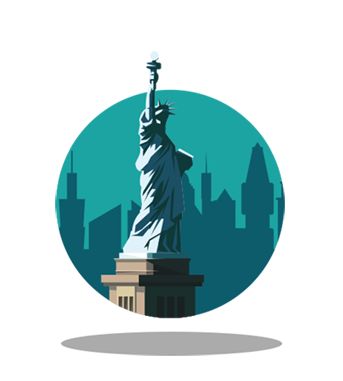When COVID-19 peaked and many countries went into lockdown, the grocery retail sector became crucial. Of course, it had always been essential, but not to this extent. With the mounting pressures and the need to adapt quickly, there was a very real possibility that grocers could buckle under the strain.
But many retail grocers stepped up, finding new and efficient (and safe) ways to help people shop. Services such as curb-side pickup, contactless payments and extended hours for at-risk consumers all helped people to navigate what was (and still is) an unsettling time for the United States.
The retail grocer Hannaford is a good example of this, and the brand saw a significant rise in the rankings in 2020. The brand began offering hand wipes at its store entrances, and introduced one-way directional signs to help maintain social distancing. It also offered a grocery pick-up service that allowed people to shop online, and then collect their goods at the store of their choice.
As such, Hannaford exemplifies customer-centricity, and this trait sets the CX champions apart from the others. To achieve true customer-centricity, brands need to have a strong understanding of The Six Pillars, and in the US the pillar of Personalization is particularly important. It is the biggest driver for loyalty and advocacy, and the brands that master it are able to adapt their customer experiences to the specific needs of the individual.
The retail grocer brand H-E-B exudes a similar ethos, although being a Texas-based retailer, it places a greater emphasis on its home turf. For example, many of its coffee blends bear names such as San Antonio and Austin, and it also sells Texas-shaped cheese chunks and tortilla chips.
Indeed, this Texas-centricity became more apparent during COVID-19, with H-E-B launching a 'Texans Helping Texans' campaign which encouraged local communities to pull together and embody "the generous spirit and strength that brings together all Texans during uncertain times"—an initiative that was intended to help the state's most vulnerable citizens. Similarly, H-E-B showed much support for the restaurant sector during COVID-19 and partnered with a number of local establishments to sell chef-prepared meals at its outlets. Undoubtedly, H-E-B's caring spirit really resonates with customers, and it sees the brand take second place in this year's research.
A caring spirit is certainly a strength of the restaurant brand Chick-fil-A, which ranks at number three in the US study. Its CX strategy is underpinned by the principles of its founder, S.Truett Cathy, who told his employees to treat each customer as if they were the president. Indeed, its workers are encouraged to constantly look for opportunities to surprise and delight, and to tell diners "it's a pleasure" rather than simply "you're welcome."
Ranking first is the financial services organization USAA, or the United Services Automobile Association. It's a brand that focuses on people who serve (or have previously served) in the US military and their families, and it has taken the top spot in the American rankings three times in the last 5 years.
Arguably, one of USAA's defining qualities is Empathy. The organization has a strong understanding of the people that it serves, including the emotional implications of having a career in the military, or being the spouse of someone who serves. When USAA says it "knows what it means to serve," it isn't just talking about customer service.
This customer-centricity has also enabled USAA to innovate. For example, its mobile app uses the Zelle payment platform, enabling customers to make payments to others using just an email address or phone number, within minutes. Such a service is particularly useful for someone serving in a non-domestic location, who may need to transfer money quickly.
"We have been with USAA for a while now," said one respondent. "They are always very helpful. I am able to call and ask for a copy of my insurance cards to be emailed to me and it only takes minutes."
The companies highlighted in the United States survey stand as leading examples of customer experience best practice in 2020, but in these ever-changing, uncertain times, they cannot afford to rest on their laurels.
“Leaders in our 2020 index maintained strong customer relationships during times of volatility, with commercial availability and cadence being at the core of this relationship. As customer needs and expectations adapt to the new reality, businesses need to rethink their customer engagement approaches, with a stronger reliance on digital interaction." ”
Jeffrey Mango
Managing Director, Customer Solutions
KPMG in the United States
Leading CX brands in USA
USAA

H-E-B

Chick-fil-A

Navy Federal Credit Union

Edward Jones

In-N-Out Burger

Costco Wholesale

Publix

Wegmans

Charles Schwab


